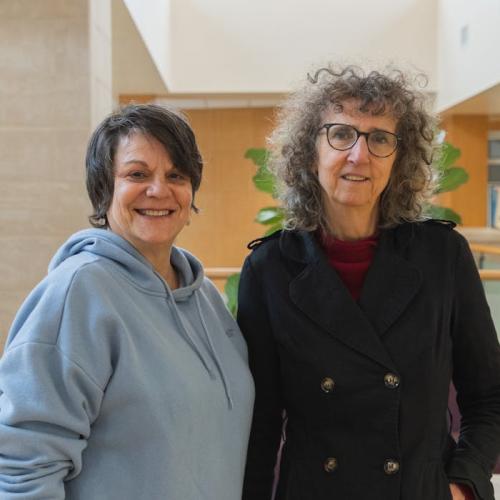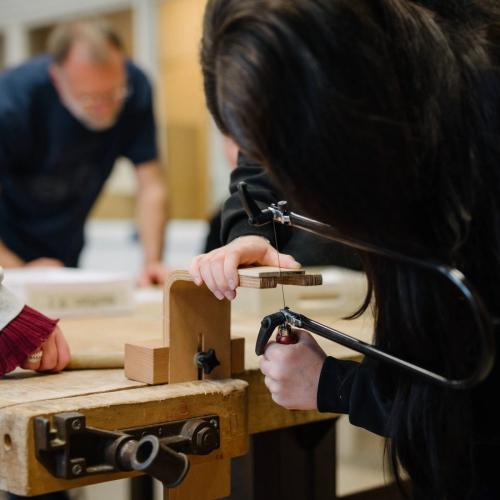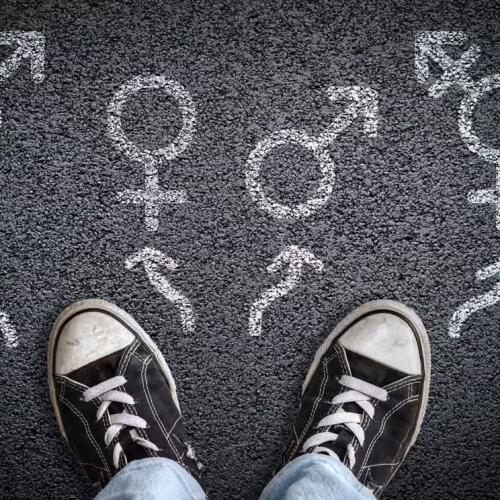Inspirational News Articles
Below are key excerpts of some of the most inspiring news articles from reliable news media sources. If any link fails to function, a paywall blocks full access, or the article is no longer available, try these digital tools.
For further exploration, delve into our Inspiration Center.
Since 1980, [former engineer Kailash Satyarthi] has spent his life campaigning against child labor, ultimately winning the Nobel Peace Prize ... in 2014. Satyarthi launched the 100 Million campaign in late 2016. The initiative ... seeks to engage 100 million young people around the world to speak out for the world's more than 100 million child workers. The International Labor Organization charts the total of child laborers globally at 152 million, with 73 million of those in hazardous labor conditions. 10 million children are victims of abject slavery. The number of children working has fallen sharply in the last two decades, from as many as 246 million in the year 2000. With more global awareness and effort, it could fall further. Satyarthi's organization and Participant Media collaborated on a letter-writing campaign, in which ... people wrote letters to the top 100 US retailers asking them to take steps to ensure the products they sell are not connected with child labor. So far more than a million letters have been sent. "The world is capable to end child labor," Satyarthi said. "We have the technology. We have the resources. We have laws and international treaties. We have everything. The only thing is that we have to feel compassion for others. "My struggle is for the globalization of compassion." Satyarthi's ambitions have long been focused on global policy, but the root of it all still remains back home in India. The original organization he founded [has] directly rescued more than 88,000 children.
Note: Why have so few ever heard of this most amazing, courageous man who has risked his life countless times to rescue tens of thousands of children from slave labor? After surviving numerous beatings and the murder of two of his colleagues, Satyarthi won the Nobel Peace Prize in 2014 for creating a global network focused on fighting for the rights of over 100 million child workers worldwide and rescuing the many millions still held as slave labor in almost every country in the world. Don't miss the moving documentary on Satyarthi and his work titled "The Price of Free."
Darrell Brokenborough opened the bright yellow refrigerator that stood on the sidewalk outside a row home at 308 N. 39th St., smiled and said, “It’s full.” He balanced on his cane so he could take a closer look at the apples, yogurt, greens, pasta, cheese and chicken inside. On the front of the fridge was written: “Free food” and “Take what you need. Leave what you don’t.” Philadelphia now has more than 20 of these refrigerators sitting outside homes and restaurants, offering free food to anyone passing by. Volunteers keep the fridges clean and stocked with food donated from grocery stores, restaurants, local farmers and anyone with extra to share. The concept of the community fridge sometimes called a “freedge” has been around for more than a decade, but it exploded during the pandemic as hunger spiked in the United States and worldwide. There are now about 200 of these community fridges in the United States, up from about 15 before the pandemic. “What we’re learning is when you do something like this, people will support it. People do have goodness and kindness, and they will bring food,” said Michelle Nelson, founder of Mama-Tee.com, which now runs 18 bright yellow fridges in Philadelphia and has been inundated with requests to put more in place throughout the country. Nelson said the effort is part of the movement known as “mutual aid,” where people, even those struggling, want to help one another and have a stake in the project.
Note: Explore a treasure trove of concise summaries of incredibly inspiring news articles which will inspire you to make a difference.
In a new report, the International Energy Agency (IEA) says solar is now the cheapest form of electricity for utility companies to build. That's thanks to risk-reducing financial policies around the world, the agency says, and it applies to locations with both the most favorable policies and the easiest access to financing. The report underlines how important these policies are to encouraging development of renewables and other environmentally forward technologies. Carbon Brief (CB) summarizes the annual report with a lot of key details. The World Energy Outlook 2020 "offers four 'pathways' to 2040, all of which see a major rise in renewables," CB says. "The IEA's main scenario has 43 [percent] more solar output by 2040 than it expected in 2018, partly due to detailed new analysis showing that solar power is 20 [to] 50 [percent] cheaper than thought." The calculation depends on financing figures compared with the amount of output for solar projects. That means that at the same time panel technology gets more efficient and prices for basic panels continue to fall, investors are getting better and better financing deals. So the statistic "20 to 50 percent cheaper" is based on a calculus of companies building solar projects, not something that has throughput for consumers or even solar homeowners. But it's still a big deal, because the cost to build power plants is a major part of why so much of the world has stuck with coal and gas power.
The Vatican urged Catholics on Thursday to disinvest from the armaments and fossil fuel industries and to closely monitor companies in sectors such as mining to check if they are damaging the environment. The calls were contained in a 225-page manual for church leaders and workers to mark the fifth anniversary of Pope Francis landmark encyclical Laudato Si (Praised Be) on the need to protect nature, life and defenseless people. The compendium suggests practical steps to achieve the goals of the encyclical, which strongly supported agreements to contain global warming and warned against the dangers of climate change. The manuals section on finance said people could favor positive changes ... by excluding from their investments companies that do not satisfy certain parameters. It listed these as respect for human rights, bans on child labor and protection of the environment. Called Journeying Towards Care For Our Common Home, one action point called on Catholics to shun companies that are harmful to human or social ecology. Another section called for the stringent monitoring of extraction industries in areas with fragile ecosystems to prevent air, soil and water contamination. Last month, more that 40 faith organizations from around the world, more than half of them Catholic, pledged to divest from fossil fuel companies. The Vatican bank has said it does not invest in fossil fuels and many Catholic dioceses and educational institutions around the world have taken similar positions.
Note: Explore a treasure trove of concise summaries of incredibly inspiring news articles which will inspire you to make a difference.
With the world’s population at 7 billion and still growing we often look at the future with dread. In Don’t Panic - The Truth About Population, world famous Swedish statistical showman Professor Hans Rosling presents a different view. We face huge challenges in terms of food, resources and climate change but at the heart of Rosling’s statistical tour-de-force is the message that the world of tomorrow is a much better place than we might imagine. Professor Rosling reveals that the global challenge of rapid population growth, the so-called population explosion, has already been overcome. In just 50 years the average number of children born per woman has plummeted from 5 to just 2.5 and is still falling fast. This means that in a few generations’ time, world population growth will level off completely. In Bangladesh ... families of two children are now the norm. We meet Taslima Khan who travels through rural villages dispensing contraceptives and advice on how to deal with difficult husbands. Deep in rural Mozambique – one of the poorest countries in the world – we meet subsistence farmers Andre and Olivia who’ve been saving for two years to buy a piece of life-transforming technology – a bicycle. Even in these countries, economic growth, investment in healthcare and infrastructure are paving the way to huge improvements in living standards. Globally, the proportion of people in extreme poverty is at its lowest ever, and now the United Nations is setting itself the goal of eradicating extreme poverty completely.
Note: Don't miss this awesome 5-minute video by author Hans Rosling showing the detailed statistics in a most entertaining way. For more see the many TED talks he gave.
We are learning just how smart insects can be. As I show in my new book, “The Mind of a Bee,” the latest research indicates that even tiny-brained bees are profoundly intelligent creatures that can memorize not only flowers but also human faces, solve problems by thinking rather than by trial and error, and learn to use tools by observing skilled bees. They even appear to experience basic emotions, or at least something like optimism and pessimism. Bees have a “dance language” by which they can inform others in the hive of the precise location of a rewarding flower patch. The symbolic language involves repeating the motor patterns (“dances”) of a knowledgeable bee on the vertical honeycomb. The movements make reference to gravity and the direction of the sun; since it’s dark in the hive, bees that want to learn from the dancer need to touch its abdomen with their antennae. Sometimes, such dances are displayed at night, when no foraging takes place: The dancer appears to think about locations visited on the previous day, without an obvious need to do so at the time. The observation that bees are most likely sentient beings has important ethical implications. Many species of bees are threatened by pesticides and wide-scale habitat loss, and that this spells trouble because we need these insects to pollinate our crops. But is the utility of bees the only reason they should be protected? I don’t think so. Bees have a rich inner world and unique perception, and, like humans, are able to think, enjoy and suffer.
Note: Watch an amazing, highly educational PBS documentary on the life of bees. Explore a treasure trove of concise summaries of incredibly inspiring news articles which will inspire you to make a difference.
A project to decentralize the internet that youve never heard of has more capacity than all other blockchain projects put together: 5-10X more, according to its founder. The project is called ThreeFold, and its not your typical blockchain startup. Instead, its a long-term project to rewire the internet in the image of its first incarnation: decentralized, unowned, accessible, free. We have 18,000 CPU cores and 90 million gigabytes, which is a lot of capacity, founder Kristof de Spiegeleer [said]. Less than 20 companies actually own more than 80% of the internet capacity, which is the storage and the compute. It really needs to be something like electricity. It needs to be everywhere and everyone needs to have access to it. It needs to be cost effective, it needs to be reliable, it needs to be independent. That would be a fundamentally different kind of internet: one we all collectively own rather than just one we all just use. It requires a lot of different technology for backups and storage, for which ThreeFold is building a variety of related technologies: peer-to-peer technology to create the grid in the first place; storage, compute, and network technologies to enable distributed applications; and a self-healing layer bridging people and applications. Oh, and yes. There is a blockchain component: smart contracts for utilizing the grid and keeping a record of activities. So ... you have people providing actual tangible services for others in exchange for some degree of cryptocurrency reward.
Note: Explore a treasure trove of concise summaries of incredibly inspiring news articles which will inspire you to make a difference.
Warring gangs in South Africa are working together in an unprecedented truce to deliver much-needed food to people under lockdown. The country has seen a 75% decrease in violent crime since it imposed strict restrictions over the coronavirus pandemic, and normally dangerous streets in Cape Town now see sworn enemies meeting up to collect essential goods to distribute throughout hungry communities. "What we're seeing happen here is literally a miracle," Pastor Andie Steele-Smith said. Steel-Smith works with gang members in his community, many of whom are convicted killers. "They are the best distributors in the country," he said. "They are used to distributing other white powders, but still they are distributing things and then, they know everybody." Preston Jacobs, a member of the "Americans" gang, told CBS News' Debora Patta it "feels nice" to take on a new role and communicate with those in need. "Now I see there are nice people also, and people want to love what we're doing now," Jacobs said. Sansi Hassan of the "Clever Kids" gang expressed hope that this current ceasefire in gang violence could be permanent in the post-lockdown future. "If it can stay like this, then there will be no gang fight," he said. "And every gang will agree with us." Pastor Steel-Smith remains optimistic for his community. "I am proud of you guys," he said to two gang members working to distribute essential goods. "If I died today and went to heaven, I would die a happy man."
Note: Explore a treasure trove of concise summaries of incredibly inspiring news articles which will inspire you to make a difference.
A study of 140 overweight or obese adults enrolled in a weight loss program found that higher levels of self-compassion, particularly self-kindness, were linked to reduced negative feelings following a dietary lapse. Individuals who practiced self-kindness tended to feel less guilty and more positive about themselves despite the setback. Afterward, they reported feeling more in command of their eating habits, suggesting that self-compassion can help people regain a sense of agency after a lapse. The research from the Center for Weight, Eating and Lifestyle Sciences (WELL Center) at Drexel University, published in Appetite, found that when study participants had more self-compassionate responses to their lapse, they reported better mood and self-control over their eating and exercise behavior in the hours following the lapse. “Many people worry that self-compassion will cause complacency and lead them to settle for inadequacy, but this study is a great example of how self-compassion can help people be more successful in meeting their goals,” said [lead author] Charlotte Hagerman, PhD. “The next time you feel the urge to criticize yourself for your eating behavior, instead try speaking to yourself with the kindness that you would speak to a friend or loved one.” For example, instead of a person saying to his or herself, “You have no willpower,” reframe it to a kinder – and truer – statement: “You’re trying your best in a world that makes it very difficult to lose weight.”
Note: Explore more positive stories like this in our comprehensive inspiring news articles archive focused on solutions and bridging divides.
Laura Talmus felt helpless when her then-11-year-old daughter Lili kept calling her from school in tears. After her daughter passed away from medical complications in her sleep at age 15 in 2009, Talmus put together a video celebrating her life. When she showed the video, Lili’s classmates were shocked to realize how isolated Lili had felt. The next year, Talmus ... and her husband channeled their grief into forming Beyond Differences, a nonprofit that focuses on raising awareness about social isolation in youth and providing solutions. Talmus believes the social isolation her daughter experienced is affecting students all over the country and contributing to serious health issues, mental health problems, suicide and school violence. Beyond Differences ... has now grown to reach over one million students in all 50 states. On February 16, 2,500 schools [participated] in No One Eats Alone Day, a day of action ... that encourages fifth through eighth graders to mingle, make new friends and become more aware and proactive about social isolation, especially at lunch. “No One Eats Alone is completely rooted in the experience Lili had,” Talmus explains. “For many children, the lunch break or recess are the worst parts, so we started with that.” Beyond Differences sends backpacks or “Belonging Boxes” with a lesson plan, games, toys, art projects, stickers and conversation starters to participating educators, at no cost to the schools.
Note: Explore more positive stories like this in our comprehensive inspiring news articles archive focused on solutions and bridging divides.
When Ben was 11 years old, his parents noticed that his grades dropped. He stopped talking about school. “These are all typical signs there might be a bullying problem,” says Bettina Dénervaud, co-founder of the Swiss initiative Hilfe bei Mobbing, which translates as “Help with Bullying.” She and her two colleagues use a 30-point checklist to evaluate if there is an underlying issue of mental, emotional and physical bullying or something else — maybe a conflict, which might require conflict resolution. Instead of being punished, the bullies are invited to help the bullied student. In a 2008 study that looked at 220 bullying cases, the No-Blame Approach was successful in 192, or 87 percent, of the cases. In most schools that were evaluated, it only took two or three weeks for the bullying to stop. The second step is the core of the No-Blame Approach. It includes calling six to eight children that the teacher chooses into a meeting that is set up as a social get together: in Ben’s case, three of the bullies, three students Ben felt he could count on and two “neutral” tag-alongs. The children are not told the meeting is about Ben. “I have a problem,” the teacher might start the discussion. “I noticed some students don’t feel supported in class. What can we do to help them, for instance, Ben?” The third step includes follow-ups with all students, including Ben, within the next few weeks. If necessary, the intervention might be repeated or tweaked. "The goal is to change the social dynamic," Dénervaud says. Younger children often start crying in these meetings, Dénervaud has observed, “because they realize for the first time what has been happening and how unhappy the bullying victim has been."
Note: Explore more positive stories like this in our comprehensive inspiring news articles archive focused on solutions and bridging divides.
In 1968, at the age of 42, psychiatrist Robert Jay Lifton sat down to write Death in Life, a book about his experiences interviewing survivors of the atomic bombings of Hiroshima and Nagasaki. Over the course of his career, Lifton studied not only survivors of the atomic bombings but Auschwitz survivors, Vietnam war veterans and people who'd been subjected to repression by the Chinese government. The COVID pandemic prompted him to reflect on what he'd learned about mass trauma and resilience – that telling stories about trauma, and even trying to influence policy, can often help people recover. Now 97, Lifton has just published his 13th book, Surviving Our Catastrophes: Resilience and Renewal from Hiroshima to the Covid-19 Pandemic. "I interviewed people who had undergone the most extreme kind of trauma and victimization," [said Lifton]. "And yet some of the very same people who had so suffered from trauma have shown what I call "survivor wisdom" — they transformed themselves from helpless victims to agents of survival. If ... storytelling can include the transformation from the helpless victim to the life-enhancing survivor, then the storytelling is crucial. The storytelling we most encourage is that kind that enables the formerly helpless victim to be transformed in the story, to transform himself or herself, collectively transform themselves into life-affirming survivors. That's the key transformation, and that's the story we [listeners] seek to help them achieve."
Note: Explore more positive stories like this in our comprehensive inspiring news articles archive focused on solutions and bridging divides.
Friluftsliv [is] a way of being that is part of the Norwegian national identity. The term was coined by the playwright Henrik Ibsen in his 1859 poem On the Heights, although the concept is much older. Its literal translation is “free-air life”, but Ibsen used it to convey a spiritual connection with nature. To modern Norwegians, it means participating in outdoor activities, but also has a deeper sense of de-stressing in nature and sharing in a common culture. An astonishingly high percentage of Norwegians report spending time outdoors. A survey in June by the market research company Kantar TNS found that 83% are interested in friluftsliv, 77% spend time in nature on a weekly basis and 25% do so most days. At many nurseries, toddlers spend 80% of their time outside; at school, there are special days throughout the year when children go out in nature and build campfires. Studies show that being in green spaces helps reduce anxiety and improve cognition. In a 2020 survey, 90% of Norwegians said they felt less stressed and in a better mood when they spent time in nature. Helga Synnevåg Løvoll, a professor of friluftsliv at Volda University College, says the five documented ways to wellbeing can be achieved through friluftsliv (they are “connect”, “be active”, “take notice”, “keep learning” and “give”). This nature-induced wellbeing could be one reason why Norway ranks among the happiest countries in the world. It came seventh in the UN’s World Happiness report in 2023.
Note: Read about the rise of "green prescription" programs in different healthcare systems around the world. Explore more positive stories like this in our comprehensive inspiring news articles archive focused on solutions and bridging divides.
Could plants be the answer to the looming threat of microplastic pollution? Scientists at UBC’s BioProducts Institute found that if you add tannins—natural plant compounds that make your mouth pucker if you bite into an unripe fruit—to a layer of wood dust, you can create a filter that traps virtually all microplastic particles present in water. While the experiment remains a lab set-up at this stage, the team is convinced that the solution can be scaled up easily and inexpensively. For their study, the team analyzed microparticles released from popular tea bags made of polypropylene. They found that their method (they’re calling it “bioCap”) trapped from 95.2 per cent to as much as 99.9 per cent of plastic particles in a column of water, depending on plastic type. When tested in mouse models, the process was proved to prevent the accumulation of microplastics in the organs. Dr. Rojas, a professor in the departments of wood science, chemical and biological engineering, and chemistry at UBC, adds that it’s difficult to capture all the different kinds of microplastics in a solution, as they come in different sizes, shapes and electrical charges. “There are microfibres from clothing, microbeads from cleansers and soaps, and foams and pellets from utensils, containers and packaging. By taking advantage of the different molecular interactions around tannic acids, our bioCap solution was able to remove virtually all of these different microplastic types.”
Note: Explore more positive stories like this in our comprehensive inspiring news articles archive focused on solutions and bridging divides.
Harriet de Wit, a professor of psychiatry and behavioural science at the University of Chicago, was running an experiment on whether the drug MDMA increased the pleasantness of social touch in healthy volunteers. Mike Bremmer, de Wit's research assistant, appeared at her office door with a concerned look on his face. A man named Brendan had filled out a standard questionnaire at the end. Strangely, at the very bottom of the form, Brendan had written in bold letters: "This experience has helped me sort out a debilitating personal issue. Google my name. I now know what I need to do." Brendan had been the leader of ... a notorious white nationalist group. "Go ask him what he means by 'I now know what I need to do,'" [de Wit] instructed Bremmer. As he clarified to Bremmer, love is what he had just realised he had to do. "Love is the most important thing," he told the baffled research assistant. "I conceived of my relationships with other people not as distinct boundaries with distinct entities, but more as we-are-all-one. I realised I'd been fixated on stuff that doesn't really matter. There are moments when I have racist or antisemitic thoughts ... But now I can recognise that those kinds of thought patterns are harming me more than anyone else." While MDMA cannot fix societal-level drivers of prejudice and disconnection, on an individual basis it can make a difference. In certain cases, the drug may even be able to help people see through the fog of discrimination and fear that divides so many of us.
Note: A case study about Brendan was published in the journal Biological Psychiatry. Read more on the healing potentials of psychedelic medicine, including science journalist Rachel Nuwer's new book, I Feel Love: MDMA and the Quest for Connection in a Fractured World. Explore a treasure trove of concise summaries of incredibly inspiring news articles which will inspire you to make a difference.
Walking for 30 minutes a day and practising yoga can help reduce fatigue in cancer patients and cut the risk of the disease spreading, coming back or resulting in death, research suggests. Globally, more than 18 million people develop cancer every year. It is well known that being inactive raises your risk of various forms of the disease. For decades, many oncologists and health professionals have remained reluctant to push patients to exercise in the wake of sometimes gruelling treatment regimes. But the tide appears to be turning. Three studies presented at the annual meeting of the American Society of Clinical Oncology (ASCO), the world's largest cancer conference, add weight to growing evidence that physical activity can help, not hinder, patients. The first study [examined] the impact of yoga's effect on inflammation. The research ... found those who took up yoga had "significantly lower levels of pro-inflammatory markers" compared with patients in the other group. In the second study, [participants] attended 75-minute yoga or health education classes twice a week for four weeks. Yoga was found to be better at helping relieve fatigue and maintain quality of life, the research found. A third study found cancer patients who are active can reduce their risk of dying by almost a fifth. Patients were ranked by their activity levels, with "active" classed as going for at least one 30-minute walk five days a week. After 180 days, 90% of people in the active group were still alive, compared with 74% in the sedentary group.
Note: Explore a treasure trove of concise summaries of incredibly inspiring news articles which will inspire you to make a difference.
Mental states can have a profound impact on how ill we get — and how well we recover. Understanding this could help to boost the placebo effect, destroy cancers, enhance responses to vaccination and even re-evaluate illnesses that, for centuries, have been dismissed as being psychologically driven. Neuroscientist Catherine Dulac and her team at Harvard University in Cambridge, Massachusetts, have pinpointed neurons in an area called the hypothalamus that control symptoms including fever, warmth-seeking and loss of appetite in response to infection. “Most people probably assume that when you feel sick, it’s because the bacteria or viruses are messing up your body,” she says. But her team demonstrated that activating these neurons could generate symptoms of sickness even in the absence of a pathogen. An open question, Dulac adds, is whether these hypothalamic neurons can be activated by triggers other than pathogens, such as chronic inflammation. The insula ... is involved in processing emotion and bodily sensations. A 2021 study ... found that neurons in the insula store memories of past bouts of gut inflammation — and that stimulating those brain cells reactivated the immune response. Such a reaction might prime the body to fight potential threats. But these reactions could also backfire. This could be the case for certain conditions, such as irritable bowel syndrome, that can be exacerbated by negative psychological states.
Note: Explore a treasure trove of concise summaries of incredibly inspiring news articles which will inspire you to make a difference.
A dad has left medics baffled after waking from a coma with extraordinary artistic talents he never had before - and he's now a professional carpenter and model maker. Moe Hunter, 38, spent more than a month in a coma where his heart even stopped after being diagnosed with a rare form of bacterial meningitis and tuberculosis in his brain. He awoke from brain surgery with no memory but soon left his friends and family gobsmacked when he started to display a special gift he didn't possess before. Moe suddenly discovered he had a newfound creative flair and an inexplicable talent for drawing, painting and model building - despite being 'rubbish' at art at school. He used his new skills to embark on a career as a self-employed carpenter and began building intricate life-size model replicas from the world of TV and film. Married dad-of-one Moe has since sold pieces of his artwork and has displayed his amazing creations at Comic-Con events. Moe said: "I really wasn't creative before in the slightest, in fact people used to laugh at my drawings. “Even to this day some of my family can’t believe it. When I spoke to the neurologist he just said 'enjoy it' and said there's so much about the brain they still can't decipher and this is just a phenomenon. I look at all of my stuff now and I'm like 'never in a trillion years could I do this stuff'. I have no idea how it happened. “My doctor said that I was a walking miracle to be able to recover as quickly as I did - but when I started displaying these new artistic talents they were just stumped."
Note: Explore a treasure trove of concise summaries of incredibly inspiring news articles which will inspire you to make a difference.
"Don't get dirty!" was once a constant family refrain, as parents despairingly watched their children spoil their best clothes. Today, many parents may secretly wish their children had the chance to pick up a bit of grime. According to recent research, the dirt outside is teaming with friendly microorganisms that can train the immune system and build resilience to a range of illnesses, including allergies, asthma and even depression and anxiety. Certain natural materials, such as soil and mud ... contain surprisingly powerful microorganisms whose positive impact on children's health we are only beginning to fully understand. Our brains evolved in natural landscapes, and our perceptual systems are particularly well suited to wild outdoor spaces. Supporting this theory, one study from 2009 found that children with attention-deficit hyperactivity disorder (ADHD) were better able to concentrate following a 20-minute walk in the park, compared to a 20-minute walk on the streets of a well-kept urban area. People who grow up on farms are generally less likely to develop asthma, allergies, or auto-immune disorders like Crohn's disease [due to] their childhood exposure to a more diverse range of organisms in the rural environment. Michele Antonelli, a doctor from Italy ... has researched the ways that mud therapies can influence health. People with [skin] disorders ... seem to have an impoverished community of organisms. "These microorganisms can play a major role in many major chronic diseases," he says.
Note: Explore a treasure trove of concise summaries of incredibly inspiring news articles which will inspire you to make a difference.
A 215-metre-long banquet table, lined with 648 chairs and laden with a home cooked produce, was set up along the Rue de l'Aude and those in attendance were urged to openly utter the most subversive of words: bonjour. For some, that greeting led to the first meaningful exchange between neighbours. "I'd never seen anything like it before," says Benjamin Zhong who runs a cafe in the area. "It felt like the street belonged to me, to all of us." The revolutionaries pledged their allegiance that September day in 2017 to the self-styled R©publique des Hyper Voisins, or Republic of Super Neighbours, a stretch of the 14th arrondissement on the Left Bank, encompassing roughly 50 streets and 15,000 residents. In the five years since, the republic – a "laboratory for social experimentation" – has attempted to address the shortcomings of modern city living, which can be transactional, fast-paced, and lonely. The experiment encourages people ... to interact daily through mutual aid schemes, voluntary skills-sharing and organised meet ups. A recent event at the Place des Droits de l'Enfant allowed neighbours to celebrate reclaiming the public space. A lifeless road junction ... no longer performed its role as an "urban square" – a place for life, interaction and meetings. But after residents were consulted about what they thought the square should become, it was cleaned, pedestrianised, planted and had street clutter removed with a grant of nearly 200,000 euros from the City of Paris.
Note: Explore more positive stories like this in our comprehensive inspiring news articles archive focused on solutions and bridging divides.
Important Note: Explore our full index to revealing excerpts of key major media news articles on several dozen engaging topics. And don't miss amazing excerpts from 20 of the most revealing news articles ever published.













































































